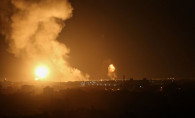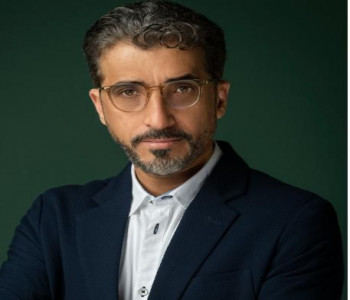Using AI to protect journalists
Using AI to protect journalists
Over the past decades, many international laws have been issued to protect journalists while performing their work in areas of conflict, disasters and wars, and to enable them to defend their rights in times of peace, war and military conflicts. The protection of journalists is part of the United Nations Sustainable Development Plan for 2030.
The Office of the United Nations High Commissioner for Human Rights (OHCHR) is mandated to promote and protect the effective enjoyment of all human rights, including the rights of journalists and media workers.
The protection of journalists is also included in the 1948 Universal Declaration of Human Rights and in the International Covenant on Civil and Political Rights, which was approved by the United Nations General Assembly in 1966. The 1978 UNESCO Declaration "On the Contribution of the Mass Media to Strengthening Peace and International Understanding, to the Promotion of Human Rights and Countering Racialism, Apartheid and Incitement to War" supports journalists. Likewise, the United Nations Special Report on Freedom of Opinion and Expression (1993) and the Johannesburg Principles on National Security, Freedom of Expression and Access to Information (2002) came to affirm the same rights, in addition to the Arab Charter on Human Rights (2004) and the European Court of Human Rights (2010).
After reviewing all these decisions, we must be convinced that we do not need more international and local decisions, because they are simply not implemented. After we saw that all those who have committed crimes against journalists have escaped punishment and have not been held accountable or tried, it has become important to think of other solutions to protect journalists, especially in light of the technological development that the world is witnessing, such as in the field of artificial intelligence and the use of robots and drones.
It is important for the real picture and information to reach the world, but the lives of journalists and their protection are no less important, especially since killing a journalist does not only mean his departure but also the destruction of his family and children and the frustration of his colleagues and friends, in addition to obscuring the truth. The use of technology and artificial intelligence to protect journalists in conflict zones can enhance the safety of journalists, contribute to improving information gathering, and reduce risks in several ways, including, for example:
Data analysis and risk prediction: Artificial intelligence can be used to analyze data from multiple sources such as social media, news reports, and field communications. These analyses can help predict risks and identify high-risk areas or times when security conditions may be deteriorating.
Artificial intelligence can identify patterns and threats: AI systems can recognize unusual or dangerous patterns by monitoring communications or troop movements in conflict zones, providing journalists with early warnings of potential threats.
The use of drones has also become important: Drones can be used to gather information in dangerous places that may be unsafe for journalists, and aircraft equipped with cameras and sensors can send data and images in real time, thus protecting photographers who are often the most important target.
Encryption and secure communications: AI technology can help improve the security of communications between journalists and their teams, using advanced encryption techniques and identity verification to protect sensitive information exchanged by journalists in the field.
Introducing automated robots in the field work of journalists: In some cases, robots can be used to enter dangerous places instead of journalists; these robots can be equipped with cameras and sensors to gather information without exposing journalists to danger.
These are some ideas and technological solutions that may contribute to enhancing the safety of journalists while performing their duties in dangerous environments, reducing the risks they may face. I believe that those working in the technical field can provide additional ideas to protect journalists, and in return, international institutions concerned with protecting journalists, led by the United Nations and UNESCO, must adopt these ideas to make them a reality.







